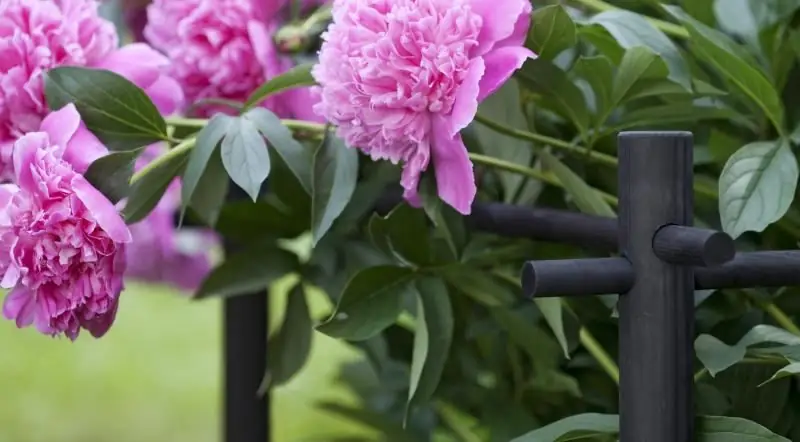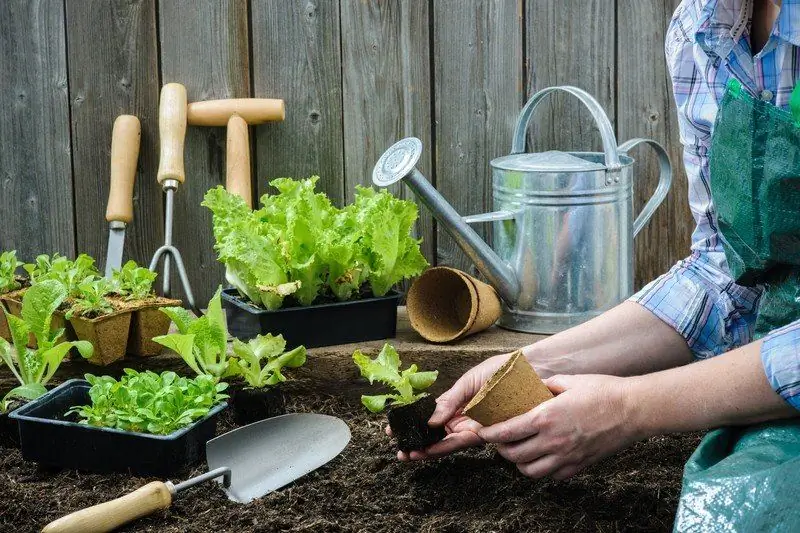
Table of contents:
- Author Bailey Albertson [email protected].
- Public 2023-12-17 12:53.
- Last modified 2025-06-01 07:32.
We propagate horseradish in the garden quickly and correctly

Horseradish is a spice widely used in Russian cuisine. It not only gives a variety of dishes and homemade products an original taste and piquant pungency, but also benefits health as a valuable source of vitamins and minerals. Therefore, the plant can be found in the vast majority of household plots. As a rule, gardeners do not have problems with horseradish reproduction, but there are some important nuances here.
How can you multiply horseradish in the garden
It is recommended to grow horseradish in the same place for no more than 10 years, so sooner or later the problem of its reproduction arises in front of all gardeners. For this, both generative (seeds) and vegetative (parts of a plant) methods are suitable. Even inexperienced gardeners will not have problems - the culture is very hardy and unpretentious, quickly and without problems takes root in a new place.

Growing horseradish does not require practically any effort from the gardener, even beginners can cope with its reproduction
The most suitable time for horseradish breeding is spring (from late March to late April) and autumn (from mid September to late October). Specific dates are selected taking into account the characteristics of the local climate. But in principle, if you have chosen a vegetative method, no one forbids doing this throughout the summer.
Cuttings
The simplest option, practically guaranteeing success, even if you just bury small pieces of rhizomes in the ground in the chosen place. But it is better to follow the simple landing rules.
Lateral branches from the main rhizome of the most powerful, healthy-looking plants 1-1.5 cm thick are used as planting material. The higher they are located on this root, the more active development will be. They are dug up in the fall, cut into cuttings up to 20-30 cm long (minimum 8-10 cm). The upper cut is made even, the lower cut oblique so as not to be confused when landing.

The preparation of planting material can be combined with digging up horseradish roots; minimum cutting length - 8-10 cm, thickness -1 cm
If the procedure is planned for the fall, you need to proceed as follows:
- Do not touch the upper and lower 5 cm of the cutting, rub the rest of the root in the middle with a coarse cloth (for example, burlap) to remove existing growth buds and small roots. This will prevent the root from branching and thinning too much.
- On a previously dug up bed, mark furrows about 10 cm deep with a row spacing of about 70 cm.
- Plant the cuttings at intervals of 25-30 cm, placing them horizontally at an angle of about 45 °. The lower part of the root should be at a depth of about 10 cm, and the upper part - 5 cm underground.
- Cover the cuttings with soil, water abundantly (up to 10 l / m²). When the water is absorbed, compact the soil, mulch the surface of the beds with peat chips, humus, mowed grass (layer up to 5 cm).
- Planting care during the summer is standard. They need regular watering, loosening the soil, weeding and, if possible, fertilizing.

The main feature of preparing horseradish rhizomes for planting is the removal of growth buds and small roots on most of the cuttings, so that more powerful roots form from the rest
Those who are going to plant horseradish in the spring need to save the cuttings during the winter. To do this, they are placed in a container with sand, sawdust, wood chips, peat chips. Its walls must be breathable (wood, cardboard). The planting material is kept in any cool dry place with good ventilation, for example, in a cellar.
About a month before planting in the garden, the cuttings are transferred to a bright, warm (23-25 ° C) room. The middle part is covered with any opaque material, leaving 5 cm open at each end. Planting material is sprayed with heated water twice a week. Growth buds begin to swell in about 15-18 days.
Horseradish is planted in a permanent place in the same way as in the autumn planting. Leaves from new plants can be obtained at the end of the next season, marketable rhizomes - in another year.

Seedlings after planting cuttings appear quickly and amicably, but do not expect the rapid development of the aerial part - first, horseradish bushes should grow roots
Video: preparing and planting horseradish cuttings
Growing from seeds
The generative method of horseradish breeding is quite time consuming and takes a lot of time, so gardeners rarely resort to it. It is also impossible to guarantee the preservation of varietal characteristics. However, on the other hand, it is a unique opportunity to develop your own unique kind of culture.
Horseradish flowering has been observed by a few gardeners. This happens only if you do not disturb the plants for 2-3 years - do not dig out the roots, do not cut off the leaves. After flowering, fruits with seeds are formed.

Horseradish bloom is almost an exclusive sight
Collect planting material in the middle of autumn. You can immediately plant horseradish in a prepared, dug garden bed, planting seeds to a depth of 2.5-3 cm. The interval between them is about 10 cm, the row spacing is up to 70 cm. The culture is frost-resistant, so in the spring you can count on mass shoots.

Preparing horseradish seeds yourself is much more difficult than rhizomes
Another option is to grow seedlings for spring planting in the beds:
- The collected seeds are stored during the winter in a refrigerator or basement, cellar, or another cool and dark place, after mixing with sand or peat chips. As it dries, the substrate is moistened and gently loosened.
- About a week before disembarkation (mid-March), the container is transferred to the warmest place in the apartment, and good lighting is provided.
- Horseradish seeds are planted in a universal soil for seedlings, after slightly moistening it. The spacing between seeds is 2-3 cm, the row spacing is 4-5 cm.
- For germination, a temperature of 21-25 ° C and high humidity are required. Cover the container with seeds with glass or cling film, spray the substrate with a spray bottle as it dries.
- Seedling care is standard - it consists of watering, gentle loosening of the soil, if you wish, you can apply fertilizers (infusion of wood ash, mineral nitrogen or universal fertilizing for seedlings based on biohumus). In the phase of the second true sheet, picking is carried out into separate containers.
- Horseradish seedlings are ready for planting in the ground after 4-5 leaves appear. To make it easier for the seedlings to adapt to the new habitat, it is preliminarily recommended to harden them for 7-12 days before transplanting them into the garden bed.

Horseradish seedlings need picking for more harmonious development
Regardless of the chosen time of planting seeds, the development of seedlings is rather slow. Active growth of horseradish leaves begins only in the second year of being in the open field. Roots can be dug out at the end of Season 3.

In the first season after planting seeds in open ground, horseradish seedlings practically do not increase the green mass
Horseradish is an extremely unpretentious plant. Most often, gardeners simply forget about caring for it. Under such conditions, it gradually "runs wild" and degenerates, turning into a weed. Correct and timely reproduction of the culture will help to avoid this. There are several ways, most often gardeners choose vegetative as the least time consuming and guaranteeing quick results.
Recommended:
How To Quickly Clean Horseradish At Home And How To Wipe Your Hands Later + Video

What you need to clean horseradish. Advantages and disadvantages of different methods. Recommendations for effective hand washing after root treatment. Video
How To Quickly Peel Squids, Including Frozen Ones, And Quickly Get Rid Of The Film + Photos And Videos

Do you think peeling squid is a difficult and energy consuming task? We will dissuade you of this
Fences For Garden Beds With Your Own Hands - How To Make A Fence For A Front Garden, Flower Garden Or Vegetable Garden, Step By Step Instructions With A Photo

Options for fences for a suburban area. Their pros and cons. How to install a holder for plastic bushes, a flower bed from bottles: step by step instructions. Video
How To Defrost Meat At Home Quickly And Correctly In A Microwave, Hot Water, Oven And Other Methods + Photos And Videos

How to defrost meat at home. Methods in the microwave and without it, in hot or cold water, in the refrigerator and others. Pros and cons of methods
What Can Be Planted In June In The Country: Plants For The Garden, Vegetable Garden And Flower Garden

Plants suitable for planting in the garden in June are greens, roots, other vegetables, flowers. What can be planted in open ground and in a greenhouse. Gardener's recommendations
